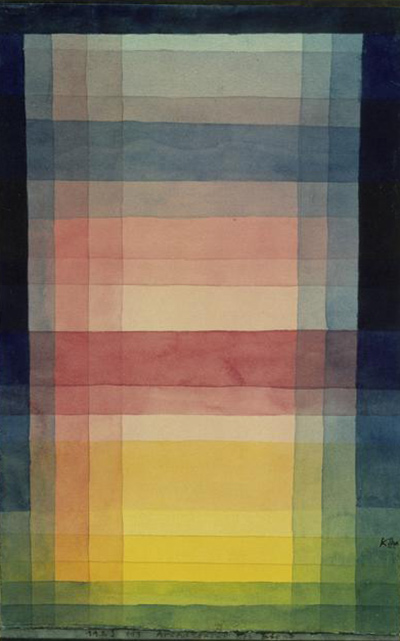Paul Klee painted Architecture of the Plain using his trademark Expressionist style. The artist uses a wave of colour to express the freedom that is typically found in a wide open space.
The beauty of the land is also captured in the selection of colours used for this piece.
Architecture of the Plain was completed in 1923. Like all of his other Abstract art pieces, the painting relies on Klee's understanding of colour theory in order to be successful.
He has merged a wide variety of shades in a way that ensures that each viewer gets an impression of smooth movement, like the wind passing unhindered over a flat surface.
Most of the elements used in this Abstract work of art are square. The artist uses several of them in a way that suggests planned, continuous motion.
The freedom to be found in this work of art was not always reflected in Klee's personal life. He was persecuted for his works of art by the Nazis. In fact, he was forced to leave Germany in 1933. When he did so, he returned to his Swiss homeland.
The plain is visualised in Klee's mind and rendered in his composition as a movement from one kind of hue to another. He has a tendency to do this sometimes in his work.
The lower portion of the scene is filled with vivid yellow. The upper portion is a mix of more subdued hues, such as a blend of grey and blue. To some, the top portion of the composition may seem uninteresting because of the hues chosen.
Klee might have chosen to segment the picture in this way because of how he saw the flora of the plain organised as he looked out over it with an artist's eye.
The vivid yellow may be areas where there is more to look at in terms of plants that are thriving there. Regardless of that, he has paid careful attention to detail in creating each square.
While everyone would not use the palette chosen by Klee for this painting, for him, they harmonise beautifully. His geometric work is like a puzzle. It appeal to the senses while leaving each viewer wondering what more lies beneath each block of colour.




